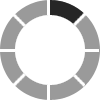Package :
Cost :
Total Tests :
Schedule
| Test Name | Syllabus | Starts from date |
|---|---|---|
 Demo Exam |
 28th March, 2017 |
|
 Test |
 2nd May, 2023 |
|
 Project Management Professional |
 3rd May, 2023 |
|
 Project Management Professional Level 1 |
 16th May, 2023 |
|
 CMRP Level 1 |
 14th June, 2023 |
|
 CMRP Level 2 |
 15th June, 2023 |
|
 Project Management Professional Level 2 |
 15th June, 2023 |
|
 Project Management Professional Level 3 |
 15th June, 2023 |
|
 Project Management Professional Level 4 |
 15th June, 2023 |
|
 Project Management Professional BE |
 15th June, 2023 |
|
 Cbap Level ! |
 30th June, 2023 |
|
 Cbap Level 2 |
 30th June, 2023 |
|
 Agile Project Management Level1 |
 14th August, 2023 |
|
 Agile Project Management Level2 |
 14th August, 2023 |
|
 Agile Project Management Level3 |
 14th August, 2023 |
|
 Agile Project Management Level4 |
 16th August, 2023 |
|
 APICS SUPPLY CHAINS, DEMAND MANAGEMENT, AND FORECASTING-FORCASTING |
According to the APICS Dictionary, 16th edition, forecasting is the business function that attempts to predict sales and use of products so they can be purchased or manufactured in appropriate quantities in advance. The purpose of forecasting is to engage in demand planning. The Dictionary defines demand planning as the process of combining statistical forecasting techniques and judgment to construct demand estimates for products or services (both high and low volume; lumpy and continuous) across the supply chain from the suppliers’ raw materials to the consumer’s needs. Items can be aggregated by product family, geographical location, product life cycle, and so forth, to determine an estimate of consumer demand for finished products, service parts, and services. Numerous forecasting models are tested and combined with judgment from marketing, sales, distributors, warehousing, service parts, and other functions. Actual sales are compared with forecasts provided by various models and judgments to determine the best integration of techniques and judgment to minimize forecast error. Everything in the supply network depends upon the number of customers that make purchases from the wholesaler, retailer, or direct sales/website offering your product: manufacturing, capacity, warehousing, transportation, location and type of retail outlets, amounts of raw material to extract—everything. If production outstrips demand, you suffer financial losses or worse. If orders exceed supply, your frustrated customers may go instead to your competitor. Forecasting demand is a necessary part of business planning. You have to have some guidelines when deciding how much product you’re likely to sell and how much, therefore, you need to produce. Demand forecasting is “forecasting the demand for a particular good, component, or service” (Dictionary). Even make-to-order business models need to have sufficient capacity and components prepared prior to receiving customer orders. A number of principles of forecasting follow that, if understood, help people know how to best conduct forecasting and how much to rely on the results. |
 17th August, 2023 |
 APICS SUPPLY CHAINS, DEMAND MANAGEMENT, AND FORECASTING: INTRODUCTION |
Supply chain models are useful because they simplify complex real-world supply chains and help them become more understandable. Here, we start with the most basic supply chain and then we discuss vertical versus lateral integration. An organization’s supply chain can have many forms. It can be a simple chain or a complex network or a structure that is somewhere between these two extremes. No matter whether it is a product or service chain, or what types of entities are involved, companies require their supply chains to guarantee a steady flow of supply at an acceptable cost. They can improve operating efficiency by employing the right supply chain structure. According to the APICS Dictionary, 16th edition, a supply chain is a global network used to deliver products and services from raw materials to end customers through an engineered flow of information, physical distribution, and cash. A supply chain, in this view, comprises a network of both entities and processes (the engineered flow). The massive chains that interest us in this course—the ones that run through corporations such as Walmart, Nestle, Boeing, Airbus, or Caterpillar—are decidedly global in scope. The Dictionary defines supply chain management as the design, planning, execution, control, and monitoring of supply chain activities with the objective of creating net value, building a competitive infrastructure, leveraging worldwide logistics, synchronizing supply with demand, and measuring performance globally. (In this case, “globally” can mean either worldwide or the supply chain as a whole rather than to a particular entity within the chain.) |
 24th August, 2023 |
 APICS: SUPPLY CHAINS, DEMAND MANAGEMENT, AND FORECASTING: Demand Analysis and Patterns |
Strategic, tactical, and operational plans can run right into the brick wall of a harsh economic climate, changing tastes, a competitor with superior offerings at lower prices, or a new government with new priorities or regulations. Therefore, an environmental scan is needed to validate the current plans. The idea is to develop organizational and related supply chain strategies, tactics, and operations that are flexible enough to adopt changes quickly as demanded by the situation. Demand analysis looks at the organization in relation to its external environment. Demand can be analyzed over the long, medium, or short term. Long-term demand analysis looks at the macro environment, which the 16th edition of the APICS Dictionary defines as “the environment external to a business including technological, economic, natural, and regulatory forces that marketing efforts cannot control.” While an organization’s macro environment includes external influences on strategy that can only be understood, not controlled, the organization can shape itself or its products and services over time in reaction to or in anticipation of a given environment. The organization can exercise some degree of control over demand at the tactical and operational levels, however. It can influence demand by changing tactics, such as by changing prices, promotions, and customer or employee policies/procedures. At the operational level it can exert control by managing and prioritizing demand. At the long-term strategic level, tools such as a SWOT analysis can be used to look inward at the organization’s strengths and weaknesses and outward at opportunities and threats. A medium- to short-term demand analysis will include market research to identify external influences on demand. Marketing can use this information to determine how to influence that demand, since marketing efforts can have an impact on demand at this level. The process may also include an assessment of the organization’s product and service offerings to see if changes are needed to what is being offered. |
 24th August, 2023 |
 Program Management Professional Level 1 |
 9th October, 2023 |
|
 Program Management Professional Level 2 |
 9th October, 2023 |
|
 CBAP 3 |
 1st July, 2024 |
|
 CBAP 4 |
 1st July, 2024 |
|
 CBAP 28 |
 1st July, 2024 |
|
 CBAP 29 |
 1st July, 2024 |
|
 Scrum Master |
 11th December, 2025 |
 0
0
